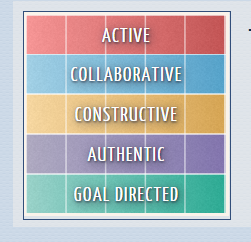Exploring The "Technology Integration Matrix"

This past week I was able to do my first classroom observation using theTechnology Integration Matrix (TIM). I have wanted to use this tools for a while to be better able to evaluate the classroom environment of technology integration. This matrix always attracted me due to its ability to cut to the chase on how the student, teacher and environment are impacted by different instructional strategies with technology.
THE TECHNOLOGY INTEGRATION MATRIX
- Provides a framework for defining and evaluating technology integration
- Sets a clear vision for effective teaching with technology
- Gives teachers and administrators a common language for setting goals
- Helps target professional development resources effectively
I think that the TIM Matrix help me cut to the chase when reviewing the use of technology in the classroom. The areas that I chose to focus on with this matrix was the teacher’s integration of tools and the classroom environment for the student. I have included a link of the basic matrix of TIM . The matrix expands into each area for both the student, teacher and environment. I found it challenging to view all the parts in one evaluation but used the student’s use of technology and the classroom environment while using technology to help paint a clear picture of the teacher’s integration. There was no need to focus too closely on any one piece as one indicator lead to another. Students collaborated because the project encouraged them to and the teacher’s role shifted to accommodate these shifts.
My methodology was to focus on the level of technology integration into the classroom and the characteristics of the learning environment. Before doing this evaluation I had reviewed this matrix several times and decided it could help define best practices for technology integration and assist at making evaluations of environments more specific and targeted towards how the technology is being used and the types of learning environments created by different tools.
Using this matrix helped me look more closely at the student’s engagement with each other and the project they were working on. I began asking myself:
- Is there a collaboration between teachers that makes these learning experiences deeper?
- What are the questions the students have about the project or use of the technology?
- What are the specific authentic skills learned by the student?
- What content is engaging the student?
- How is this project being organized?
My largest gain from using this matrix was that it was easy to extract the best practices from the lesson. The most essential information will help promote growth among my digital learning specialists. We need to be able to evaluate how each environment is different and how we can develop our skills to adapt to different environments.
Having a sense of resiliency during the most exciting and challenging parts of instructional technology integration will makes us a stronger team and to grow beyond our environment. Instructional Technologists must hold a higher ground and goal for their instruction. They are not only supporting a teachers goals but they are integrating technology in new ways and modifying lessons to have specific program impacts.
- Log in to post comments

